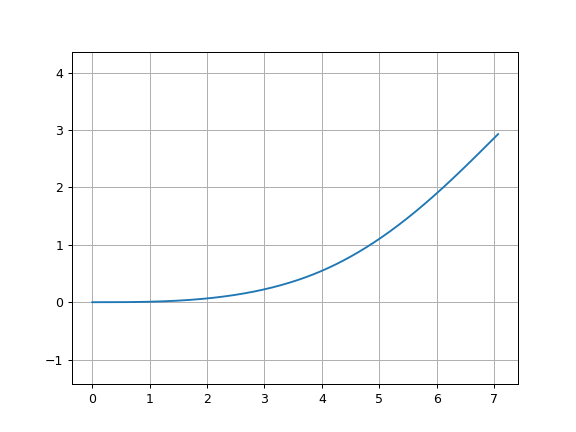- gdsfactory.path.euler(radius: float = 10, angle: float = 90, p: float = 0.5, use_eff: bool = False, npoints: int | None = None)Path
Returns an euler bend that adiabatically transitions from straight to curved.
radius is the minimum radius of curvature of the bend. However, if use_eff is set to True, radius corresponds to the effective radius of curvature (making the curve a drop-in replacement for an arc). If p < 1.0, will create a “partial euler” curve as described in Vogelbacher et. al. Vogelbacher et al. (2019)
- Parameters
radius– minimum radius of curvature.angle– total angle of the curve.p– Proportion of the curve that is an Euler curve.use_eff– If False: radius is the minimum radius of curvature of the bend. If True: The curve will be scaled such that the endpoints match an arc with parameters radius and angle.npoints– Number of points used per 360 degrees.
import gdsfactory as gf p = gf.path.euler(radius=10, angle=45, p=1, use_eff=True, npoints=720) p.plot()
- Vogelbacher, F., Nevlacsil, S., Sagmeister, M., Kraft, J., Unterrainer, K., & Hainberger, R. (2019). Analysis of silicon nitride partial Euler waveguide bends. Optics Express, 27(22), 31394. 10.1364/oe.27.031394